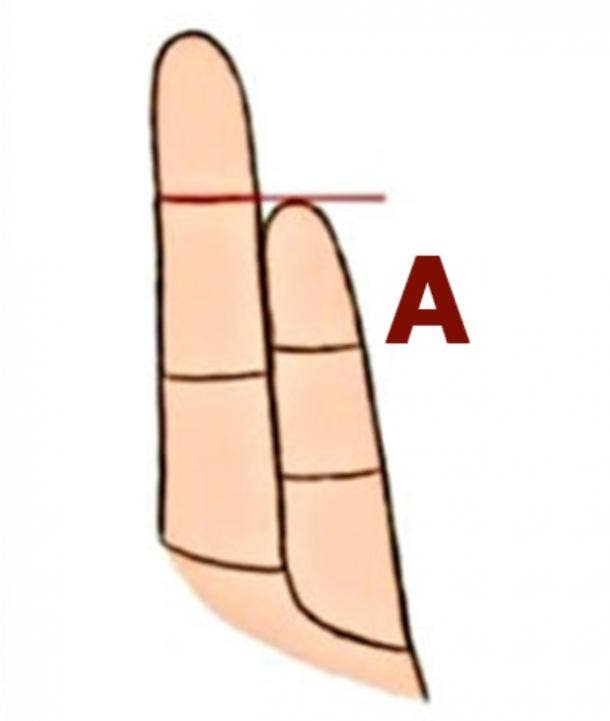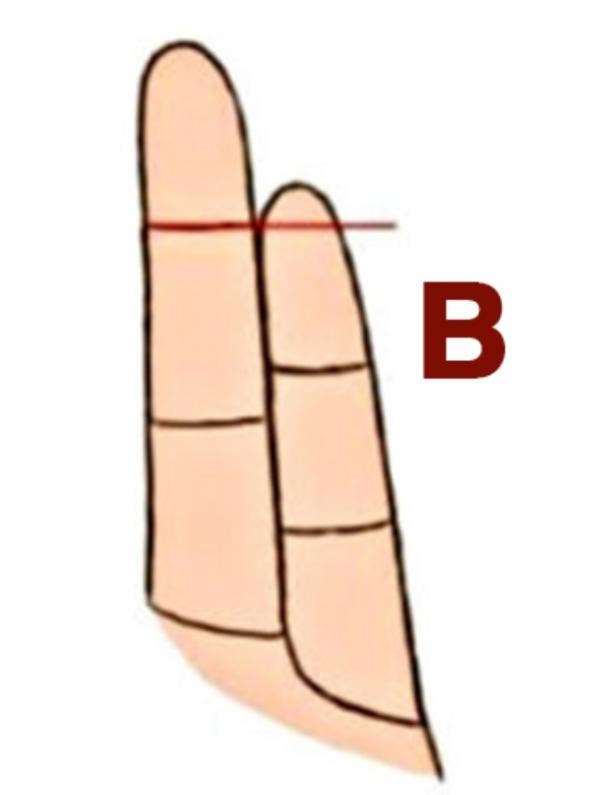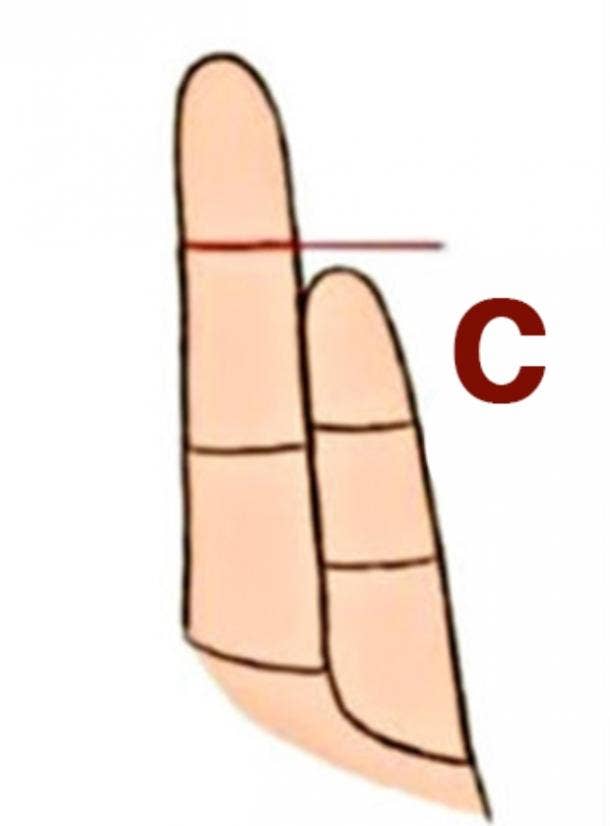It sounds strange, but the pinky finger length could say quite a lot about you, from your habits to the way you handle relationships, and the practice of using it to divine one’s personality has its roots in the practice of palm reading. RELATED: A Quick Guide To Reading Your Own Palm
There are three basic personality types that the length of your finger indicates — based on how long or short it is conpared to your ring finger’s top joint.
As with any personality test, this is more of a guideline than gospel, but you may be surprised at its accuracy. Read on to find out if you’re type A, B, or C, and what it says about you!
Type A: Even placement of pinky to ring finger joint
If the top of your pinky finger stops right at the beginning line of the top joint of your ring finger, you have an evenly placed pinkie and are type A. Type A personalities are a bit reserved and tend to be closed off and introverted. You do not open up to other people easily, even with the people closest to you, and especially not to strangers. You appear stoic and independent from the outside. Dishonesty angers you more than anything else and is constitutionally against your makeup. You are a genuine, forthright person who goes out of your way for your loved ones and expects them to do the same for you in return. After all, it’s only fair. Despite going out of your way for friends and family, strangers can see you as cold. They may mistake your distance for arrogance or eccentricity, especially since you tend to have little patience for things that annoy you. In spite of this, you are actually very warm once you open up to someone, and can be the life of the group if you’re with people you know well enough. RELATED: 6 Things You Can Tell About A Man By Looking At His Hands
Type B: Long pinky finger compared to ring finger joint
If your pinky extends past the top joint line of your ring finger, you have a long pinky and are type B. Type B’s are very loyal to their friends, and also highly sensitive people. When you have a new boyfriend or girlfriend, they become your whole world. They’re always in your thoughts, and you strive to connect with them on as deep a level as possible. Despite this devotion, you want to present the appearance of someone who can be happy all by themselves, without a significant other. You hold off on giving too much of yourself to others right away, but harbor secret dreams of finding your true soulmate. You may be likely to study psychology in school because it lets you figure out how people work. In life, you dedicate yourself completely to whatever you set your mind to: your job, your education, family or friends. Your single-minded focus lets you achieve anything you set your mind on. Overall, you have a calm, non-confrontational nature, and keep your cool well under pressure. RELATED: What Your Ring Finger Length Says About Your Personality
Type C: Short pinky finger length compared to ring finger joint
If the tip of your pinkie doesn’t reach the line of your top ring finger joint, you’re type C. Type C’s are optimistic, lively personalities that negativity cannot stick to. You tend to forgive and forget easily, sometimes to a fault, because of your inability to hold onto anger. Your excess energy may cause you to seem self-centered, and at times, demanding. You have a hard time ceding any kind of argument, especially when you’re convinced that you are in the right. At the same time, you will be the first one to say “sorry” if things go too far. Despite presenting a bubbly exterior to the world, you keep your true emotions closely held. You are, however, very forthcoming with your opinions. People know your values without question. Familiarity is comforting to you, and gives you a sense of security, while you harbor a deep fear of the unknown. Stepping out of your comfort zone occasionally will help you grow and become a better version of yourself. RELATED: How You Make A Fist Reveals One Totally Weird Thing About Your Personality Higher Perspective seeks to bring together like-minded individuals focused on personal growth and expanding their consciousness. This article was originally published at Higher Perspectives. Reprinted with permission from the author.


